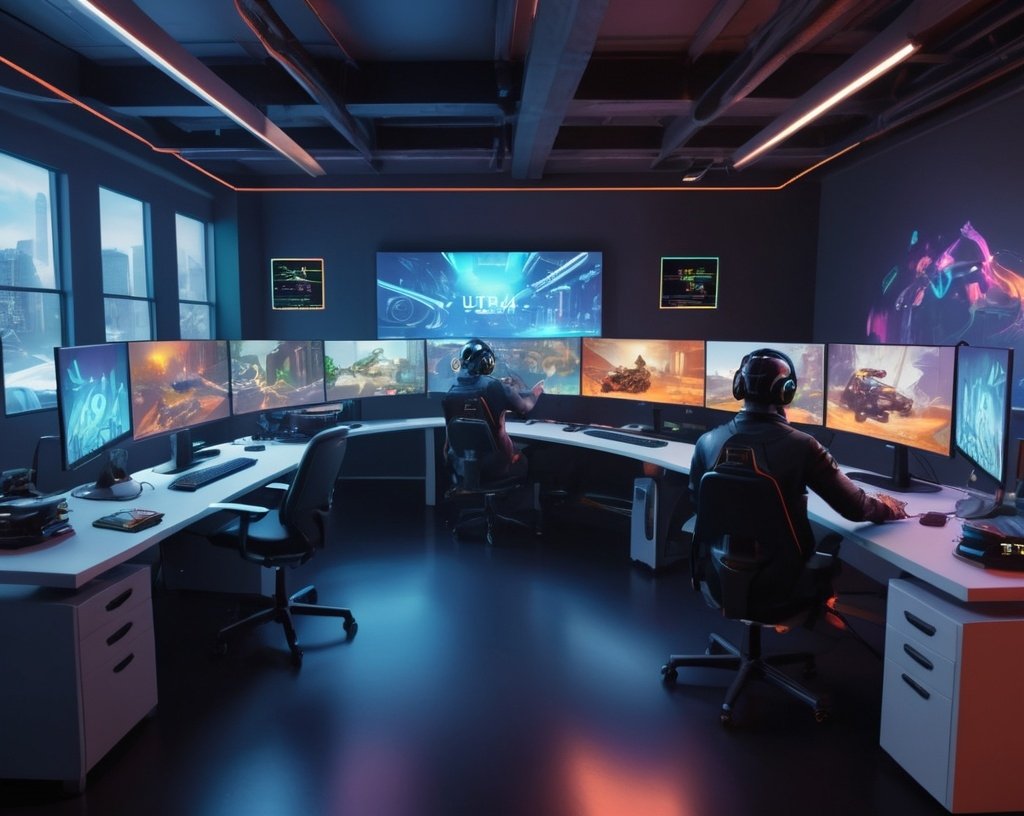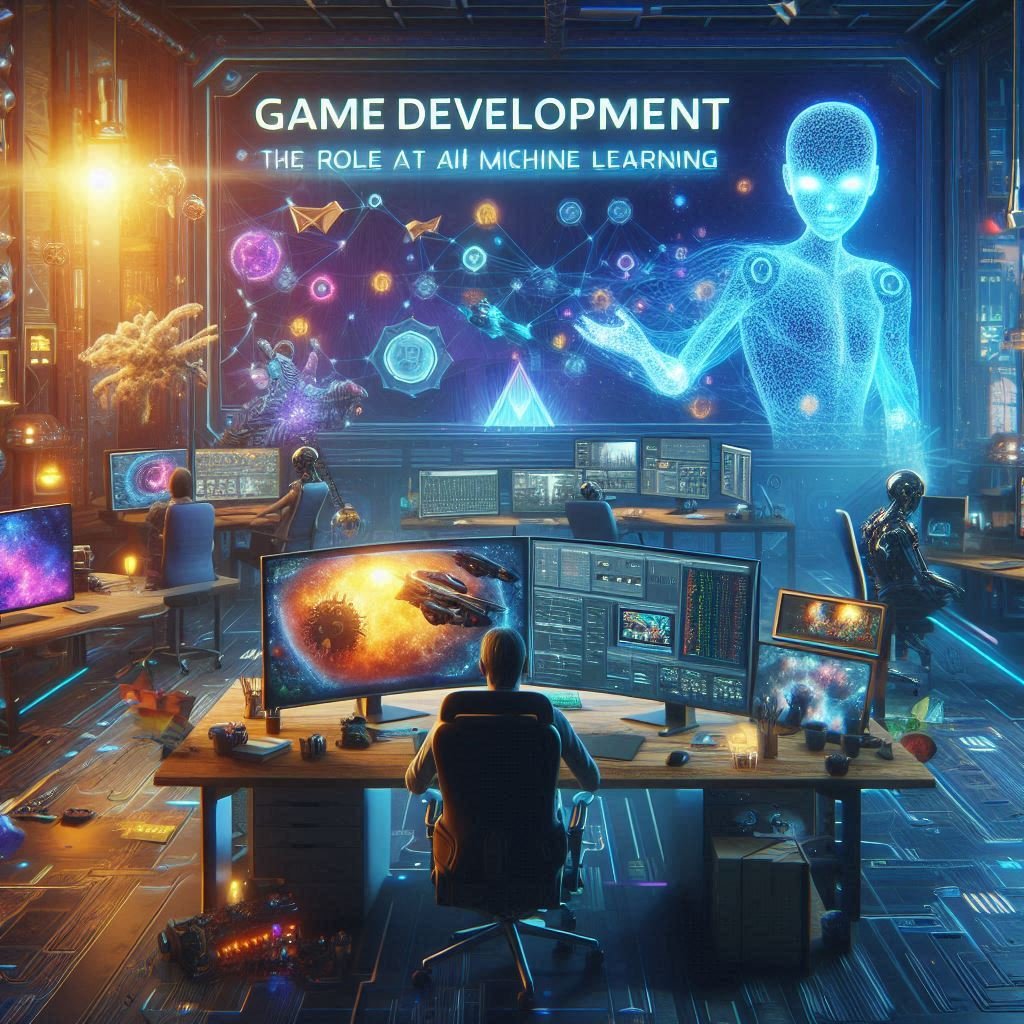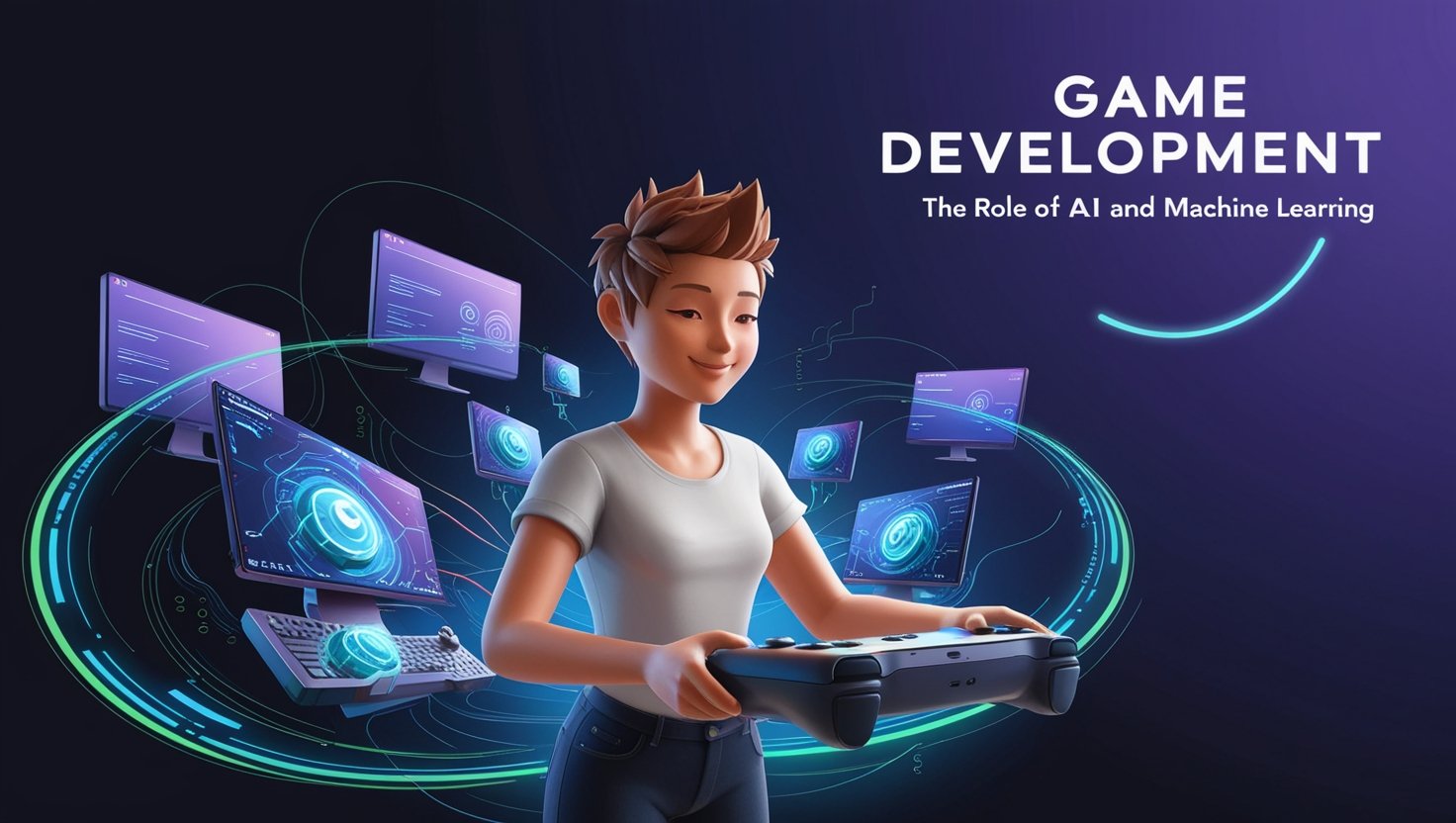AI and Machine learning are influencing game development trends.
The gaming industry is experiencing a technological revolution, with artificial intelligence (AI) and machine learning (ML) at the forefront of this transformation. In 2024, AI and ML are not just enhancing the gaming experience but are fundamentally changing how games are developed, played, and interacted with. This blog delves into the critical roles AI and ML play in game development, exploring how these technologies are influencing trends, creating new opportunities, and pushing the boundaries of what’s possible in gaming.
1. AI in Game Development: Beyond the Basics
Artificial intelligence has been a part of game development for decades, primarily used to control non-player characters (NPCs) and create intelligent behaviors within games. However, in 2024, AI is moving beyond basic NPC control to become an integral part of the entire game development process.
AI-Driven Content Creation
One of the most significant trends in 2024 is the use of AI for content creation. AI-driven tools are being used to generate everything from game levels and environments to dialogue and narratives. Procedural content generation, powered by AI, allows developers to create vast and diverse game worlds without the need for extensive manual input. This not only speeds up the development process but also allows for more dynamic and unpredictable gameplay experiences.
For example, AI can analyze a player’s behavior and preferences to generate personalized game levels or challenges that adapt to the player’s skill level and playstyle. This level of customization was previously unattainable but is now becoming a standard feature in modern game design.
Learn more about AI-driven content creation.
AI for Quality Assurance and Testing
Quality assurance (QA) is another area where AI is making a significant impact. Traditionally, QA testing in game development has been a labor-intensive process, requiring testers to manually play through the game to identify bugs, glitches, and performance issues. In 2024, AI-powered tools are automating much of this process, using machine learning algorithms to simulate gameplay and identify potential issues more efficiently and accurately.
AI-driven testing tools can run thousands of gameplay scenarios in a fraction of the time it would take human testers, identifying edge cases and rare bugs that might otherwise go unnoticed. This not only speeds up the QA process but also improves the overall quality of the final product.

2. Machine Learning in Game Design: Creating Smarter, Adaptive Games
Machine learning is a subset of AI that focuses on enabling systems to learn from data and improve over time. In game development, ML is being used to create smarter, more adaptive games that can respond to player behavior in real-time, creating a more immersive and engaging experience.
Dynamic Difficulty Adjustment (DDA)
One of the most exciting applications of ML in game development is Dynamic Difficulty Adjustment (DDA). DDA uses machine learning algorithms to analyze a player’s skill level and adjust the game’s difficulty accordingly. This ensures that the game remains challenging and engaging for players of all skill levels, without becoming frustrating or too easy.
In 2024, DDA is becoming more sophisticated, with ML models capable of analyzing a wide range of player behaviors and making real-time adjustments. For example, if a player is struggling with a particular section of the game, the ML algorithm might reduce the difficulty slightly, or offer subtle hints to help the player progress. Conversely, if a player is breezing through the game, the algorithm can increase the difficulty to keep the experience challenging.
Learn more about dynamic difficulty adjustment.
Personalized Gaming Experiences
Another trend driven by ML in 2024 is the creation of personalized gaming experiences. Machine learning algorithms can analyze player data, such as playstyle, preferences, and in-game decisions, to tailor the game experience to each individual player. This personalization can extend to various aspects of the game, including character interactions, story arcs, and even game endings.
For example, a player who prefers stealth gameplay might find that the game offers more opportunities for stealth-based actions, while a player who enjoys combat might encounter more combat scenarios. This level of personalization creates a more immersive and enjoyable experience, as the game feels tailored to the player’s unique preferences.

3. AI-Driven Narratives and Storytelling
Narrative and storytelling are essential elements of many games, and AI is playing an increasingly important role in shaping these aspects. In 2024, AI-driven narratives are allowing for more complex, branching storylines that adapt to player choices in real-time, creating a more interactive and engaging storytelling experience.
Procedural Storytelling
Procedural storytelling, powered by AI, is a trend that is gaining momentum in 2024. This technique involves using AI algorithms to generate story content dynamically, based on the player’s actions and decisions. Unlike traditional linear narratives, procedural storytelling allows for an almost infinite number of possible storylines, making each playthrough unique.
For example, in a procedurally generated story, the AI might create new characters, dialogue, and plot twists based on how the player interacts with the game world. This creates a more personalized and immersive experience, as the story evolves in response to the player’s choices.
AI-Powered Dialogue Systems
Dialogue systems are another area where AI is making a significant impact. In 2024, AI-powered dialogue systems are becoming more sophisticated, allowing for more natural and dynamic interactions between players and NPCs. These systems use natural language processing (NLP) algorithms to analyze player input and generate appropriate responses in real-time.
AI-powered dialogue systems can also adapt to the player’s behavior and decisions, creating more meaningful and personalized interactions. For example, an NPC might remember previous conversations with the player and reference them in future interactions, creating a more cohesive and immersive narrative experience.

4. AI and ML in Game Graphics and Animation
AI and ML are also revolutionizing the way game graphics and animations are created in 2024. These technologies are enabling more realistic and dynamic visuals, as well as streamlining the animation process for developers.
AI-Enhanced Graphics
AI is being used to enhance game graphics by upscaling textures, generating realistic lighting and shadows, and even creating entirely new visual elements. In 2024, AI-driven tools are becoming more widespread, allowing developers to create high-quality graphics with less manual effort.
For example, AI-powered upscaling tools can take low-resolution textures and enhance them to 4K quality, saving time and resources while still delivering stunning visuals. Similarly, AI-driven lighting algorithms can automatically adjust lighting and shadows in real-time, creating more dynamic and realistic environments.
Learn more about AI-enhanced game graphics.
ML-Driven Animation
Machine learning is also being used to streamline the animation process, allowing for more natural and fluid character movements. ML algorithms can analyze motion capture data and use it to generate realistic animations, reducing the need for manual keyframing.
In 2024, ML-driven animation tools are becoming more sophisticated, allowing developers to create complex animations with minimal input. These tools can also adapt to different character models and environments, making it easier to create consistent and high-quality animations across a game.
Explore ML-driven animation in gaming.

5. Ethical Considerations in AI and ML for Game Development
As AI and ML become more integral to game development, ethical considerations are becoming increasingly important. In 2024, developers are facing new challenges related to data privacy, algorithmic bias, and the potential for AI-driven content to impact player behavior in unintended ways.
Data Privacy and Security
One of the key ethical concerns with AI and ML in game development is the use of player data. Machine learning algorithms rely on large amounts of data to function effectively, raising questions about how this data is collected, stored, and used. In 2024, developers must ensure that player data is handled securely and that players are informed about how their data is being used.
Moreover, developers need to consider the implications of using AI to analyze player behavior and personalize experiences. While personalization can enhance the gaming experience, it also raises concerns about player privacy and the potential for data to be used in ways that players may not fully understand or consent to.
Learn more about data privacy in gaming.
Algorithmic Bias and Fairness
Another ethical consideration is the potential for algorithmic bias in AI-driven games. Machine learning algorithms are trained on data, and if that data contains biases, those biases can be reflected in the game’s behavior and decision-making processes.
Explore our AI in Animation articles






